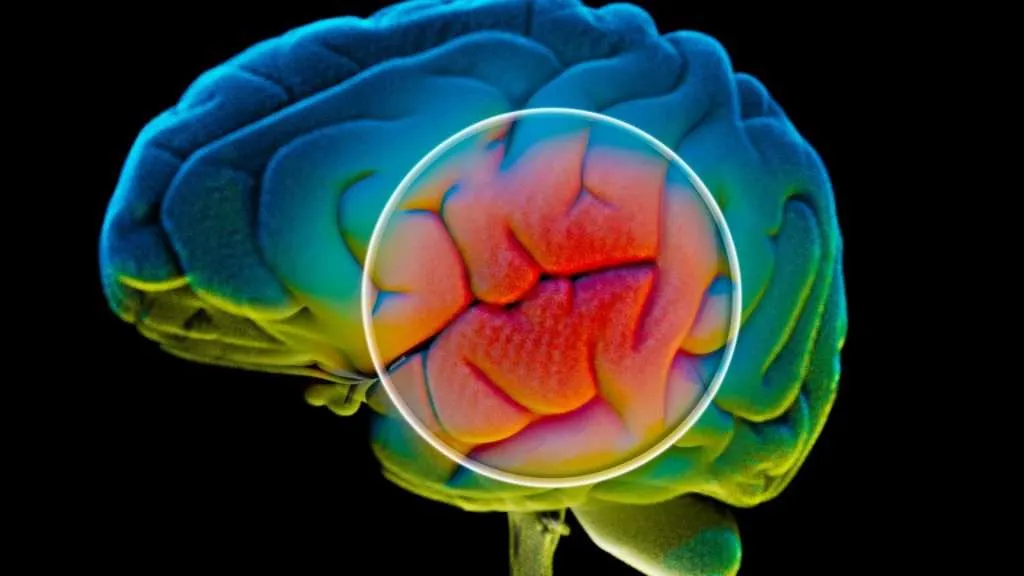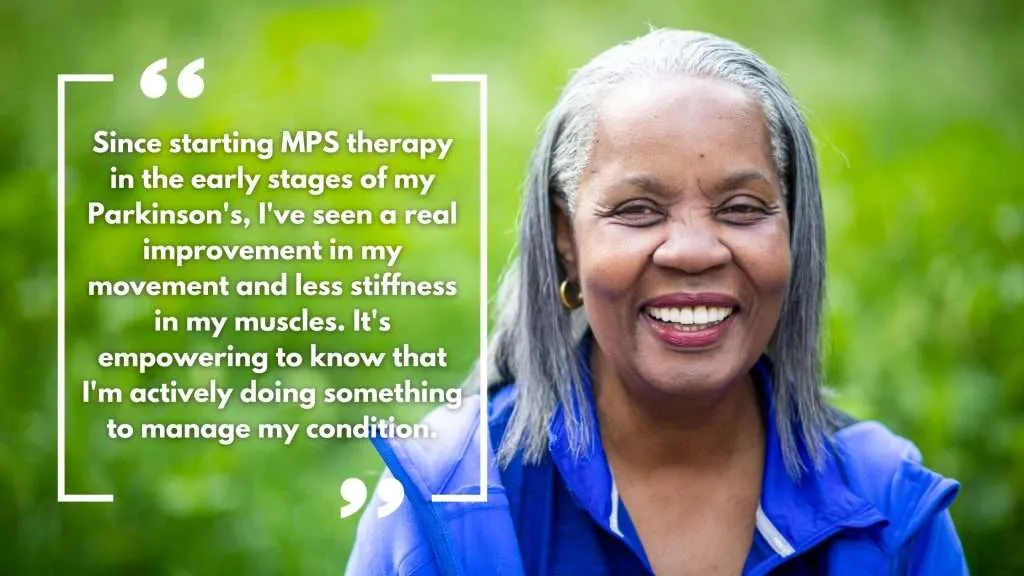Most Common Mistakes After Knee Replacement Surgery
We often rush the healing process because we want to get back to doing the things that we went into surgery to be able to do. And sometimes we get worried that we aren’t getting the results we expected because something is wrong with us or the procedure.
This article goes over the most common mistakes people make after total knee replacement to give you the confidence and clarity to stick to the process so that you can get the results from your surgery that will help you get active, stay mobile, and age stronger.
If you would prefer to watch a video explaining the most common mistakes people make after total knee replacement surgery you can watch it here:
Mistake #1: Not Having A Plan
The first mistake we see people make after total knee replacement surgery is not having a plan.
There’s a saying that goes:
“If you fail to plan, then you’re planning to fail.”
After total knee replacement surgery you might need to rely on your family or your peers to get you to your doctor’s visits. Something to also think about is whether you are going back home or to a facility for a short period of time after total knee replacement surgery.
Who is going to get food for you? Who is going to do your laundry? And, more importantly, what does your medical team look like if you are going home?
You will want to make some accommodations like getting rid of your throw rugs so you don’t potentially trip over them. You also want some night lights if you have to use a restroom in the middle morning so that you can see a little better. If you have a two story house, you want to have a bed on the first floor to make resting easier throughout the course of the day.
Mistake #2: Not Taking Enough Pain Medication
The second mistake I see people make after knee replacement surgery is not taking enough pain medications to manage the pain properly.
This operation is a major surgery and you’re going to have some pain, swelling, and tenderness around the new joints. I know many of you are scared of getting addicted to narcotics or opioids that your doctor might have recommended after surgery. Just know that you can always contact your surgeon to change the medications that give you negative side effects.
I’ve never been one to tell my patients to take pain medications, but after knee replacement surgery if you don’t manage the pain it becomes a lot harder to tolerate physical therapy. You’ll probably move less and the surgical knee will become more stiff. As the knee becomes more stiff, it gets harder to move and improve your range of motion.
This is how the vicious cycle happens.
You want to prevent it from happening in the first place so that you’re able to maximize your progress when you’re going for physical therapy.
Mistake #3: Not Listening To Your Body
The third mistake that people make after knee replacement surgery is not listening to their body, or doing too much too soon.
This includes progressing to a cane from a walker without consulting their physical therapist or surgeon and participating in high-risk activities like hiking or jumping within the first month after total knee replacement surgery. You definitely want to challenge your knee under the supervision of your physical therapist, but not to the point where you have severe knee pain or the knee starts to feel unstable.
You also want to avoid falls and allow tissue around the knee to heal as much as possible.
Just to give you an example, I have patients who have both knees done and the supposed “bad knee” recovered faster than the “better knee.” It is hard to say what your recovery process looks like until you go through with the surgery.
Mistake #4: Stopping Therapy Too Soon
The fourth biggest mistake that people make after knee replacement surgery is stopping physical therapy too soon, or forgoing physical therapy all together.
As time passes, the knee pain will decrease on its own. However, if you forego physical therapy after total knee replacement surgery you won’t maximize the strength and range of motion of the knee. Most programs require 8 to 12 weeks to get you back to doing all the things that you loved to do prior to having the knee replacement.
You decided to have the knee replaced for a reason. Don’t lose sight of that goal and stick to your treatment plan in order to get to the place you wanted to be before surgery.
Mistake #5: Compare Themselves To Others
The fifth mistake that people do after total knee replacement is compare themselves to other people.
Knee replacement is a major surgery and there are many factors that affect your recovery process, and everybody is different going into surgery. So it’s not fair to compare your process to the person next to you who had the same thing done.
Your recovery, your goals, and your journey are all unique to you and your body. No two people are exactly the same so don’t expect the exact same results as anyone else.
If you feel like you aren’t progressing properly discuss it with your physical therapist or surgeon and have them examine the joint. They will be able to tell you if you are on the right track or adjustments need to be made.
Get Help With Your Recovery Before And After The Surgery
If you have any questions, please call (281) 888-0047 and our team will give you the information you need to get clarity on your specific needs and situation so that you can make the best decision for your health going forward.
At Next Level Regenerative Physical Therapy we offer both prehab and rehab services so that you can go through total knee replacement surgery with less likelihood of complications, a faster recovery time, and more mobility and less pain over the course of the rehabilitation process.

Definition and Explanation of MPS Therapy
MPS therapy is a special kind of treatment that helps with brain diseases and keeps the brain healthy. It uses tiny, gentle electric shocks and ideas from acupuncture, which is an old way of treating sickness by putting tiny needles in specific spots on the body. This therapy gives these tiny electric shocks to certain spots on the body. These spots are like buttons that control different parts of the brain and nervous system when you press them.
How MPS Therapy Works
MPS therapy is a treatment that helps the body heal itself. It does this by giving a gentle buzz to the nerves and making sure energy can move easily all through the body. The tiny electric buzz used in MPS therapy helps the nerves talk to each other better. This helps cells work better, fixes damaged tissue, and keeps the brain healthy.
The tiny electric buzz used in MPS therapy is very gentle and feels like the natural electric signals in our bodies. This buzz talks to the nervous system, starting different body responses that help healing happen. MPS therapy helps the body make things that help with pain relief, reduce swelling, and fix damaged cells.
MPS therapy focuses on special spots on the body. These spots are connected to different areas in the brain and nerve paths. Buzzing these spots starts the body’s natural healing, fixes balance and function in affected areas, and keeps the brain at its best.
Development and History of MPS Therapy
MPS therapy comes from the old healing methods of China and acupuncture, used for thousands of years. As we learned more and technology got better, we started using tiny electric buzzes, joining acupuncture with modern electrical therapy.
A lot of the credit for MPS therapy goes to Dr. Darren Starwynn. He is an expert in the field and has done a lot of work with tiny electric buzzes. His research and hands-on experience led to the start of MPS therapy.
Since it was first used, MPS therapy has become more and more popular with doctors and patients. It’s a treatment that doesn’t hurt, doesn’t have a lot of side effects, and could help with diseases that affect the brain. This makes people see it as a good way to treat patients.
As we keep learning more, we are finding new ways to use MPS therapy to help brain health and treat different brain diseases. More and more doctors are starting to use this new method, and it looks like MPS therapy will be a big part of treating brain diseases in the future.
The Science behind MPS
MPS therapy works well because it helps the nervous system and makes healing happen at the tiny parts of your body called cells. By learning about how MPS therapy works, we can understand why it might be good at treating brain diseases and helping brain health.
MPS therapy can change the way our nervous system works. The tiny electric buzzes used in MPS therapy talk to the body’s electrical system, especially focusing on the nerves and nerve paths that deal with pain and things not working right. These tiny electric buzzes help the brain, spinal cord, and other nerves to talk to each other better, helping the nerves work better and the whole body feel better.
A big part of MPS therapy is how it changes the body’s electric environment. The tiny electric buzzes in MPS help even out the electricity across cell walls, which is needed for the cell to work right. By getting the cells’ electricity balanced, MPS therapy helps cells use oxygen and nutrients better, helping heal and regrow any damaged parts.
Also, MPS therapy has been shown to make the body release endorphins. These are things the body makes that can help take away pain and make you feel happier. These endorphins help get rid of pain and lower inflammation, helping the body heal. The use of specific points on the body in MPS therapy can also trigger the release of things called neurotransmitters and neuropeptides, which further help control pain and make the whole body feel good.
While we still need to learn more about how MPS therapy works, some studies have already shown it can be helpful. For example, a study in The Journal of Alternative and Complementary Medicine found that MPS therapy helped a lot in reducing pain and making things better for people with long-term neck pain. Another study published in the Journal of Alternative and Complementary Medicine showed how MPS therapy can affect the part of the nervous system that we don’t control consciously when it was used in a method called Battlefield Acupuncture (BFA).
These studies and others like them suggest that MPS therapy might be a good way to deal with brain diseases and help brain health without having to use invasive methods or drugs. As we keep learning about how the nervous system and healing work together, MPS therapy looks like a promising way to deal with the complex nature of these conditions.

MPS and Brain Health
MPS therapy is a special way to help our brains stay strong. It might also help with brain problems like Alzheimer’s and Parkinson’s, or when your brain feels foggy. By learning about how MPS therapy can make our thinking and body movements better, we can see how it can help keep our brain healthy.
Helping with Brain Problems
MPS therapy has been good for people with brain problems like Alzheimer’s and Parkinson’s. In Alzheimer’s, MPS can slow down the disease by helping the brain’s pathways and making them more flexible. By working on certain body points, MPS therapy aims to make blood flow better, help brain chemicals work better, and improve brain communication. This could slow down the loss of thinking skills.
People with Parkinson’s disease can also get help from MPS therapy. It can lessen problems like shaking, stiffness, and slow movement by helping the brain work better. MPS works on certain points to make the body release feel-good chemicals, which can improve movement and lessen muscle stiffness. Plus, MPS might help make more of the brain chemical dopamine and improve brain pathways related to movement. This can lead to better movement and a happier life.
Making Thinking Better
MPS therapy can also make thinking better. By working on certain body points, MPS can improve brain pathways involved in memory, attention, and thinking. This can lead to better focus, clear thinking, and overall better thinking performance. Research says that MPS might help lessen brain fog, a problem where people have a hard time thinking, focusing, and remembering. MPS therapy might make blood flow to the brain better, balance brain chemicals, and help the brain work best.
Keeping the Brain Healthy
Besides helping with certain problems, MPS therapy can also keep the brain healthy. By working on body points related to stress relief and relaxation, MPS can help lessen stress levels. High stress can hurt brain health and lead to loss of thinking skills. MPS therapy’s ability to relax, release feel-good chemicals, and control the nervous system can make the brain and overall well-being better.
MPS therapy shows a lot of promise in helping brain problems, making thinking better, and keeping the brain healthy. By working on body points, MPS aims to improve brain pathways, make them more flexible, and make the brain work better overall. As scientists keep studying the benefits of MPS, it’s becoming a very important treatment for people wanting to keep their brain healthy, manage brain problems, and improve their life.
Real Stories and Reviews
Real stories and good reviews show how Micropoint Stimulation (MPS) therapy can help with brain problems and keep the brain healthy. Let’s look at a few stories that show the good things people have seen with MPS.
Story 1: Anita – Beating Brain Fog
Anita is a teacher who was always feeling foggy in her brain. It was hard for her to focus and help her students. She was upset about her thinking getting worse and decided to try MPS. After a few tries, Anita saw a big improvement in her thinking. She could think clearly again and had an easier time focusing and understanding information. MPS therapy was very important in helping her get rid of her brain fog and making her thinking better. Because of this, she was able to do better in her personal life and at work.
Story 2: Bobby – Dealing with Parkinson’s Symptoms
Bobby used to work in finance and was diagnosed with Parkinson’s disease. He had shaking, stiff muscles, and trouble moving, which made his everyday life and being independent hard. He wanted a natural way to deal with his symptoms and decided to try MPS therapy. After some time, Bobby saw a big decrease in his shaking and stiff muscles. MPS therapy made his body movements better, making daily activities easier for him. Thanks to MPS therapy’s positive effects on his Parkinson’s symptoms, Bobby got his confidence and independence back.
Story 3: Mary – Early Stages of Parkinson’s
Mary, a retired math teacher, was in the early stages of Parkinson’s disease. Knowing that her symptoms might get worse, she decided to look for treatments. After talking to a health professional, Mary decided to try MPS therapy. With regular MPS sessions, Mary’s coordination got better, her muscles were less stiff, and she had better control over her movements. The therapy also made her feel good, knowing that she was doing something to help manage her condition. Mary’s good experience with MPS therapy showed the benefits of starting treatment early and the big difference it can make in life.
These stories show how Micropoint Stimulation (MPS) therapy can really help people with brain problems. By focusing on certain body points and making brain pathways more flexible, MPS therapy has shown it can lessen symptoms, make thinking better, and improve overall well-being.
It’s important to remember that everyone’s experience with MPS therapy might be different. It’s always best to talk to a health professional to find the best treatment for you. As more people share their good experiences and reviews, MPS therapy is becoming more known as a helpful tool for managing brain problems and keeping the brain healthy.

MPS at Next Level Regenerative Physical Therapy
At Next Level Regenerative Physical Therapy, our goal is to offer full care and new solutions to help with brain problems and keep the brain healthy. We include Micropoint Stimulation (MPS) therapy as an important treatment. Our team of skilled and experienced therapists are experts in giving MPS therapy. They make sure each patient gets personal and expert care.
Our therapists have years of experience and know all about MPS therapy and how it can help with brain problems. We look at the whole person and each patient’s special needs and goals. Then we make a treatment plan just for them. This plan includes MPS therapy and other treatments that have been proven to work.
When you come to Next Level Regenerative Physical Therapy, our therapists will take a close look at your specific condition. They will decide the best way to help you. If MPS therapy is right for you, our therapists will walk you through it. They will explain how the therapy works and how it can help you.
We take pride in creating a kind and supportive place where our patients feel at ease and sure in their journey to better brain health. Our dedicated team will be there for you. They will guide you, watch your progress, and change the treatment plan if needed to make sure you get the best results.
If you want to know more about MPS therapy and how it might help your brain problem, we invite you to come talk with our team at Next Level Regenerative Physical Therapy. Our experts will be happy to talk about your specific situation, answer your questions, and help you on the path to better brain health and overall well-being.
Take the next step towards better brain health by contacting us today to set up your talk. Together, we can see how Micropoint Stimulation (MPS) therapy can help you reach your goals of dealing with brain problems and making the brain work better.

